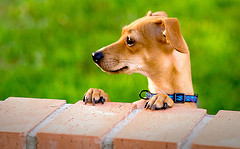I recently bought my first tripod. More than a year after I first started making money with my photography, and two years after I got my first decent camera. I finally got one because I’ve been asked to do photography at several night time events over the coming months but I had resisted buying one for so long because I find them (the affordable ones anyway) too heavy and bulky to be practical. For those of you who may also be making do without a tripod here are a few other options for getting stable:
Monopods. These are little poles that you mount your camera on top of. They are lightweight and easy to move and some of them come with velcro straps so you can attach them to fence posts and the like. However they’re not great for long exposure and some monopods may not be strong enough to hold a larger SLR camera.
Beanbags. Very cheap, light weight, and easy to squash into an overstuffed camera bag. Beanbags make excellent camera supports and almost never break! Simply put a beanbag between your camera and a rock/bench/tree/car roof and it’ll support your camera perfectly.



 2. Try to capture a characteristic action or activity. If you’re shooting your pet, you know its personality. Try to take a picture that reflects some characteristic, such as curiosity, goofiness, adoration, or self-possession. You do not have to include every inch of your pet, only the parts needed to express what you’re trying to capture. This image by
2. Try to capture a characteristic action or activity. If you’re shooting your pet, you know its personality. Try to take a picture that reflects some characteristic, such as curiosity, goofiness, adoration, or self-possession. You do not have to include every inch of your pet, only the parts needed to express what you’re trying to capture. This image by 










